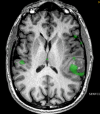Advances of MR imaging in glioma: what the neurosurgeon needs to know
- PMID: 40542873
- PMCID: PMC12182469
- DOI: 10.1007/s00701-025-06593-6
Advances of MR imaging in glioma: what the neurosurgeon needs to know
Abstract
Glial tumors and especially glioblastoma present a major challenge in neuro-oncology due to their infiltrative growth, resistance to therapy, and poor overall survival-despite aggressive treatments such as maximal safe resection and chemoradiotherapy. These tumors typically manifest through neurological symptoms such as seizures, headaches, and signs of increased intracranial pressure, prompting urgent neuroimaging. At initial diagnosis, MRI plays a central role in differentiating true neoplasms from tumor mimics, including inflammatory or infectious conditions. Advanced techniques such as perfusion-weighted imaging (PWI) and diffusion-weighted imaging (DWI) enhance diagnostic specificity and may prevent unnecessary surgical intervention. In the preoperative phase, MRI contributes to surgical planning through the use of functional MRI (fMRI) and diffusion tensor imaging (DTI), enabling localization of eloquent cortex and white matter tracts. These modalities support safer resections by informing trajectory planning and risk assessment. Emerging MR techniques, including magnetic resonance spectroscopy, amide proton transfer imaging, and 2HG quantification, offer further potential in delineating tumor infiltration beyond contrast-enhancing margins. Postoperatively, MRI is important for evaluating residual tumor, detecting surgical complications, and guiding radiotherapy planning. During treatment surveillance, MRI assists in distinguishing true progression from pseudoprogression or radiation necrosis, thereby guiding decisions on additional surgery, changes in systemic therapy, or inclusion into clinical trials. The continued evolution of MRI hardware, software, and image analysis-particularly with the integration of machine learning-will be critical for supporting precision neurosurgical oncology. This review highlights how advanced MRI techniques can inform clinical decision-making at each stage of care in patients with high-grade gliomas.
Keywords: 5ALA - 5-aminolevulinic acid; CBV-cerebral blood volume; CEST-chemical exchange saturation transfer; DTI-diffusion tensor imaging; FMRI-functional MRI; GKS-gamma knife surgery; LITT-Laser induced thermal therapy; MRI-magnetic resonance imaging; RT-radiation therapy; T2FLAIR-T2 fluid attenuated inversion recovery.
© 2025. The Author(s).
Conflict of interest statement
Declarations. Ethical approval: Not applicable to a review article. Retrieval of anonymized figures was approved by the head of the Department. Competing interests: The authors declare no competing interests.
Figures





Similar articles
-
Magnetic resonance perfusion for differentiating low-grade from high-grade gliomas at first presentation.Cochrane Database Syst Rev. 2018 Jan 22;1(1):CD011551. doi: 10.1002/14651858.CD011551.pub2. Cochrane Database Syst Rev. 2018. PMID: 29357120 Free PMC article.
-
Pediatric Diffuse High-Grade Gliomas: A Comprehensive Review Of Ad-vanced Methods Of Diagnosis And Treatment.Curr Cancer Drug Targets. 2025 Jun 30. doi: 10.2174/0115680096365252250618115641. Online ahead of print. Curr Cancer Drug Targets. 2025. PMID: 40598730
-
Intraoperative imaging technology to maximise extent of resection for glioma.Cochrane Database Syst Rev. 2018 Jan 22;1(1):CD012788. doi: 10.1002/14651858.CD012788.pub2. Cochrane Database Syst Rev. 2018. PMID: 29355914 Free PMC article.
-
Advanced MRI, Radiomics and Radiogenomics in Unravelling Incidental Glioma Grading and Genetic Status: Where Are We?Medicina (Kaunas). 2025 Aug 12;61(8):1453. doi: 10.3390/medicina61081453. Medicina (Kaunas). 2025. PMID: 40870498 Free PMC article. Review.
-
Congress of neurological surgeons systematic review and evidence-based guidelines for the role of imaging in newly diagnosed WHO grade II diffuse glioma in adults: update.J Neurooncol. 2025 Aug;174(1):7-52. doi: 10.1007/s11060-025-05043-8. Epub 2025 May 8. J Neurooncol. 2025. PMID: 40338482 Free PMC article. Review.
References
-
- Bette S, Gempt J, Huber T, Boeckh-Behrens T, Ringel F, Meyer B, Zimmer C, Kirschke JS (2016) Patterns and time dependence of unspecific enhancement in postoperative magnetic resonance imaging after glioblastoma resection. World Neurosurg 90:440–447 - PubMed
Publication types
MeSH terms
LinkOut - more resources
Full Text Sources
Medical

